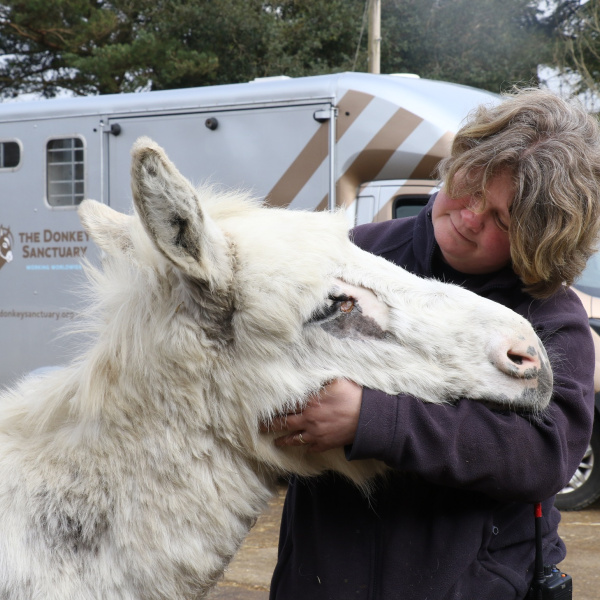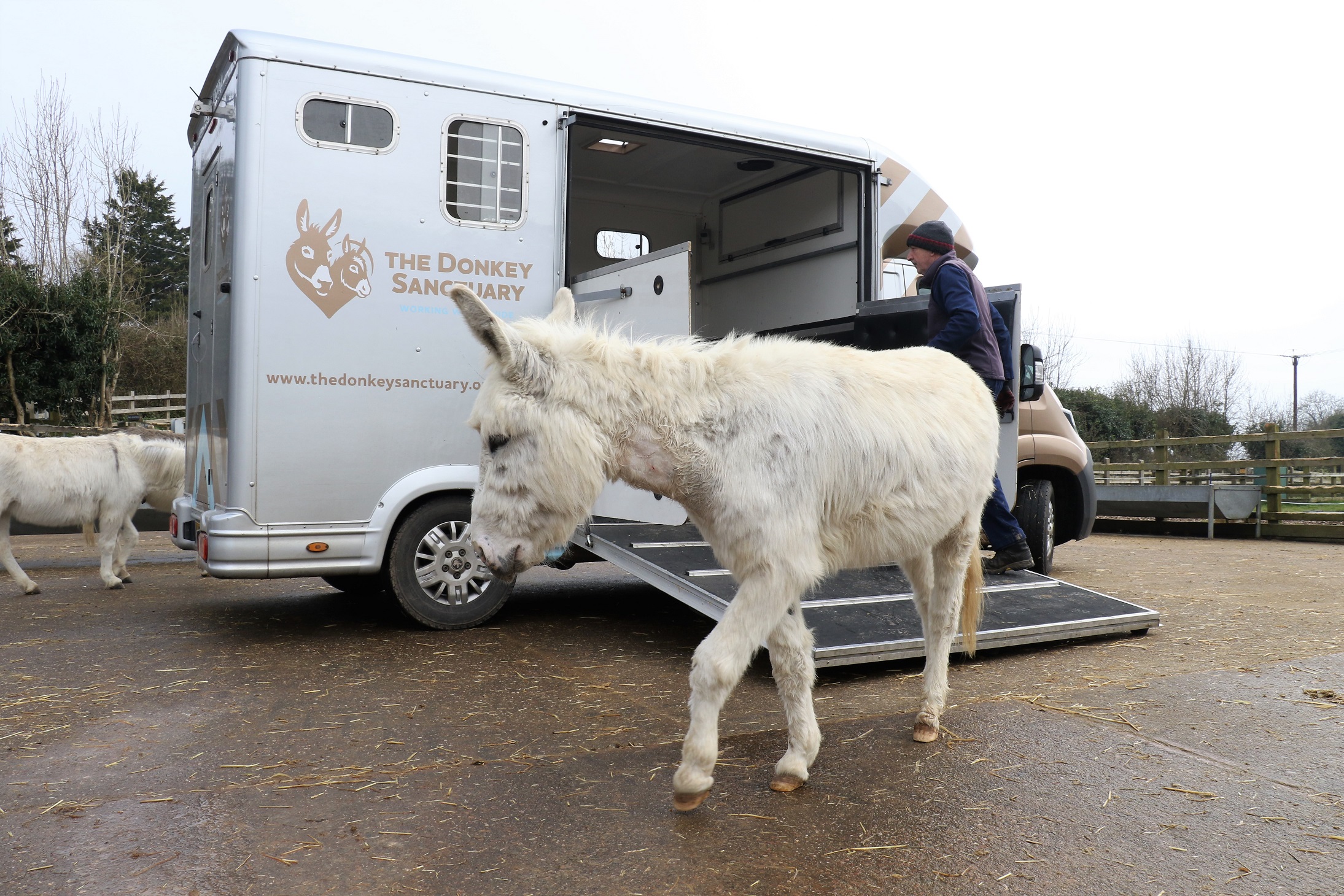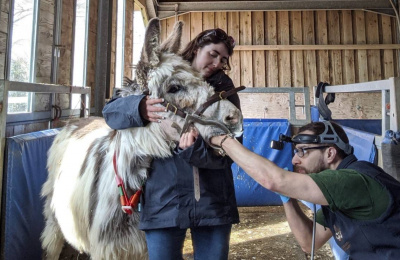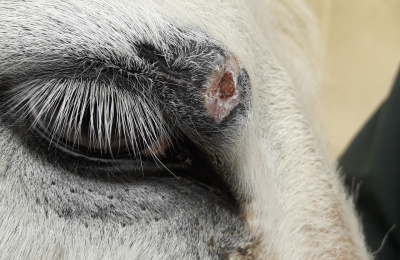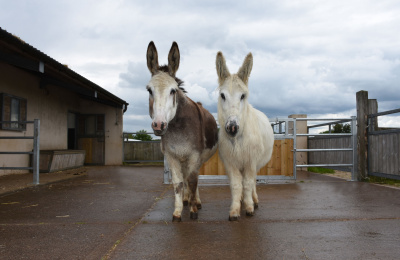During this very difficult time our staff are still providing all the love and care to our donkeys and mules, ensuring they are kept healthy and well, while trying to keep a normal routine. For eight-year-old Snowy, urgent hospital treatment was needed to remove a suspected sarcoid which was growing close to one of his eyes.
Accompanied by his friends Fern and Derek, who are also mother and son, Snowy was taken on the short trip to our donkey hospital near Honiton, where they were met on arrival by veterinary surgeon Vicky Grove and her colleagues.
Preparing for donkey surgery
After passing his pre-anaesthetic checks, Snowy was prepared for surgery with an IV catheter and a mild sedative to reduce anxiety.
He was separated from the others to go into the induction box where he had a pre-op sedative immediately.
Vicky takes up the story: “Snowy was given an intravenous induction using ketamine and kept under anaesthetic using a top up of the drug. As the suspected sarcoid was close to his eye, an injection of local anaesthetic was used to numb the area, and his eye was taped up to protect him from the laser beam.
“The operation lasted about 15 minutes as the lesion was only small, but because of its location right on the lower eye lid, was highly significant.
“Using our laser diode machine to cut the lesion out meant that the surrounding tissues were heated up, which helps to reduce recurrence.”
Following the operation, the trio of donkeys were soon on their way back to the sanctuary in Sidmouth, where they joined their herd in time for their afternoon feed.
On the road to recovery
Snowy is continuing to recover well, with his grooms providing daily checks.
Because of the current travel restrictions in place due to the coronavirus, the veterinary team are restricted to emergency visits, but are sent regular updates and photographs to monitor his progress.
The good news is that the nodule was later analysed by the lab who confirmed it was a sarcoid, but as it was fully removed it may not be necessary to provide further follow up treatment with topical chemotherapy.
